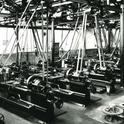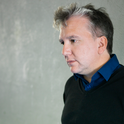A single idiot acting alone can cause chaos. But to make a scandal—the kind of horror that sticks in the national memory—you need lots of people to do their job so badly that whole systems collapse; and then you need more people, probably in very senior positions, to engage in sustained dishonesty and smug indifference in order to draw a curtain of secrecy around the whole mess. Consider the case of the Guildford Four.
It is 50 years since the IRA planted bombs in two Guildford pubs, murdering five young people, maiming dozens more; 50 years since the Surrey police started an investigation that ended up blaming four entirely innocent people who were then locked away for life. And only now do we begin to see the hidden players who so casually joined in the wrongdoing.
Two journalists, Grant McKee and Ros Franey, spent years trawling for scraps of evidence which had been lost, buried or overlooked by the police. They produced two TV documentaries and a book before Paul Hill, Gerry Conlon, Paddy Armstrong and Carole Richardson were finally liberated from the jail cells where, by that time, they had lost 15 years of their lives. But that was only the beginning. A revised edition of Franey and McKee’s book, Time Bomb, now uses new material to rip gaping holes in the curtain of secrecy.
It begins so simply. Confronted with the ghastly violence on the night of 5th October 1974, Surrey police had the bright idea of keeping Scotland Yard off their patch by creating their own Bomb Squad. They proceeded to do their job very badly.
Time Bomb describes how, after several weeks of getting nowhere, the Surrey Bomb Squad stumbled upon Paul Hill, apparently because a soldier who knew him in Northern Ireland reckoned that he was a perfect match for the photofit they had produced of one of the suspects. The fact that the photofit showed the face of a woman might have deterred them. It didn’t.
Surrey police proceeded to raid Hill’s relatives in England (Time Bomb suggests they went a little further with his 17-year-old sister, who reported being stripped naked) until they found Hill in Southampton. They arrested him, plus some of his friends and associates. These suspects later claimed variously that they were questioned relentlessly, denied sleep, punched, slapped, threatened with guns and told that their loved ones would be charged if they didn’t confess. Surrey police denied all of it. Years later, Time Bomb reveals, an independent police report found that 11 Surrey officers had engaged in malpractice.
Suspects later claimed that they were punched, slapped, threatened with guns and told that their loved ones would be charged if they didn’t confess
The Four gave in and confessed to the Guildford bombs. Hill and Armstrong were also persuaded to confess to having thrown a bomb through the window of the Kings Arms pub in Woolwich a month later, killing two young men and injuring 35. The other suspects refused to give in and were released. The fact that this meant Surrey police waving farewell to people who were named as fellow conspirators in the Four’s confessions might have given them a reason to reconsider. It didn’t.
Those confessions were the only evidence against the Four. None of the survivors from the pubs identified them. No forensic scientist found any link between them and any kind of explosive. No amount of searching turned up any sign of bombmaking in their homes. The confessions never offered any fact that proved to be true which was not already known to the police—and they contained, as Time Bomb puts it, “manifold nonsenses and contradictions”. The weakness of the case must have been obvious to Surrey police.
As a single example, they claimed that Richardson was the female bomber who had been seen leaving one of the Guildford pubs at 6.53 on the evening of the murders. (They now said she was a perfect match for the same photofit that had previously been a perfect match for Hill.) Richardson could prove she had been at a concert in the South Bank polytechnic 52 minutes after that, at 7.45. Surrey police used a specialist driver in a “very nippy” car to drive the route: he made it in exactly 52 minutes.
That left no time for Richardson to get from the pub to a car and then from the car to the polytechnic—a problem made worse by the fact that, in her desire to please her interrogators, Richardson had claimed to have left the first pub and then to have gone to the second pub to help with the killing there. It also ran into the serious problem that three of her friends all said she had been in London before the concert began. The three of them were variously arrested, slapped and threatened with being thrown off the roof of Guildford police station. Two changed their statements, one withdrew entirely. Surely this would have persuaded any responsible detective or prosecutor to halt the case. Of course, it didn’t.
It is at this point that Time Bomb reveals how the original mess of wrongdoing starts to draw in the senior players who will turn it into a scandal.
There is Roy Habershon, the head of Scotland Yard’s Bomb Squad and certainly more competent than his Surrey counterparts. He was dealing with an IRA Active Service Unit (ASU) which had been bombing and shooting on the British mainland since March 1974. He knew that this one ASU was responsible for dozens of different attacks because his squad had found multiple links, including their fingerprints in abandoned safe houses and on defused devices. In the late summer of 1975, he pulled all the clues together in a long report which—crucially—included the attacks in Guildford and Woolwich as the work of this ASU. Habershon then came close to doing the right thing.
On 16th September 1975, the trial of the Guildford Four began at the Old Bailey. On 25th September, Time Bomb records, Habershon sent his report to the director of public prosecutions (DPP). And so, of course, the prosecutors told the Four’s lawyers that they had evidence that linked an entirely different group of people to their supposed crimes, with the result that the trial was stopped immediately. Actually, no, they didn't. The DPP suppressed Habershon’s report. The defence knew nothing of this evidence. The Four were duly convicted of the Guildford bombs; Hill and Armstrong were also convicted of Woolwich. They were all sentenced to life with recommendations that they stay there for at least 30 years. In Hill’s case, the judge told him he should die in jail. And Habershon let this happen.
And then there is Peter Imbert, later to become the commissioner of the Metropolitan Police, at this time a senior detective in the London Bomb Squad. He had already been involved with the case, interviewing Hill and Richardson after they confessed to Surrey police and evidently failing to notice the weakness of the case against them. Now he was drawn into the heart of things when four of the IRA Active Service Unit were finally cornered by brave officers who spotted them trying to fire guns into a Mayfair restaurant and pursued them until they took refuge in a flat in Balcombe Street, Marylebone.
When the siege there ended, Imbert and a colleague interviewed one of the IRA men, Eddie Butler, who spoke openly about his own role in a succession of attacks—including the bomb thrown into the Kings Arms in Woolwich. Imbert’s colleague then said: “Now you know that Hill and Armstrong have been convicted of the Woolwich bombing. Were you with them?” “No,” replied Butler. “Never heard of them.” A few days later, a second member of the group from Balcombe Street, Joe O’Connell, made much the same claim to them. Time Bomb records that neither Imbert nor anybody else from Scotland Yard told Hill, Armstrong or their lawyers about this. They did inform prosecutors, who surely felt the weight of these claims since they already had Habershon’s report which precisely linked the Woolwich bomb to the members of this ASU. Nevertheless, the DPP chose to say nothing.
By good fortune, one of the lawyers for the Four—the extraordinarily persistent Alastair Logan—heard on the prison grapevine of the two IRA men’s claims and succeeded in visiting Joe O’Connell and then a senior IRA man, Brendan Dowd, who had been arrested before the Balcombe Street siege. The two men admitted they had been involved in the bombings in Guildford, as well as Woolwich, and provided telling detail to confirm their claims. They insisted that the Four had nothing to do with them.
Now, Time Bomb finds a hole in the curtain to record the role of John Mathew QC, an esteemed criminal barrister, who led the prosecution of the four men trapped in Balcombe Street. Originally, he presented an indictment accusing the men of 144 offences, with a time frame beginning in August 1974. But in spite of the clear admissions by Butler and O’Connell about their involvement in the murders in Guildford and Woolwich, neither attack was included in the list. And by the time it came to trial, the list of offences had been cut back even further so that it didn’t start until December 1974—that is, well after both attacks.
An explosives expert later admitted that he doctored his own statement under pressure from a London Bomb Squad officer
John Mathew also submitted a report from an explosives expert, Douglas Higgs, who linked the remaining offences on the indictment to the men in the dock. In an extraordinarily dramatic cross-examination by one of the ASU’s lawyers, Higgs was then compelled to admit that he had doctored his own statement to remove the evidence linking them to Guildford and Woolwich. Higgs told the court that a London Bomb Squad officer had told him to do this. Subsequently, an official inquiry revealed that this officer was acting on instructions from John Mathew QC.
Lord Justice Roskill then played his ignominious part, sitting on the appeal of the Four, absorbing the fact that the prosecution now accepted that the members of the ASU were telling the truth when they admitted bombing Guildford and Woolwich. Nevertheless, he rejected the appeal. He did this on the basis that everybody was guilty—the ASU members as well as the Guildford Four. This completely contradicted the confessions on which the Four had been convicted. It also generated absurdity—for example, by continuing to believe that Paddy Armstrong was telling the truth when he claimed to have sat in the bomber’s seat in one of the pubs, even though Brendan Dowd had been able to prove that he was sitting in the same seat at the same time (something which had not been noticed by any witness).
Time Bomb records that, even now, much remains concealed. When the court of appeal finally caught up with the truth, it simply quashed the Four’s convictions—so there was no hearing at which the evidence could be revealed. A public inquiry by Sir John May sat behind closed doors and produced a report that softened every rough edge. Seven-hundred pages of official paperwork were due to be released in January 2020—but, at the last moment, the Home Office managed to block their release. An inquest which was finally held in 2022 refused to look at anything beyond the immediate cause of death of the victims. It also allowed Surrey police to use public money to pay barristers to put their case, while ruling that there was no justification for giving legal aid to any survivor or bereaved family who, therefore, had nobody to speak for them.
When systems collapse and powerful people collude, it takes mavericks to set things right. There are not many solicitors who are as unstoppable as Alastair Logan and, later, Gareth Peirce, and not many journalists as dedicated as McKee and Franey. At least they can say that they brought a little justice to the story. It is more than the police can say.
To this day, none of the real killers has ever been convicted of the bombings in Guildford or Woolwich. John Mathew refused to charge Butler, O’Connell and Dowd when he had the chance. Roy Habershon in his report named a man and a woman against whom there was certainly enough evidence to warrant a prosecution, but they were left to live their lives in peace while young men and women lie in their graves. That’s how scandal works.












